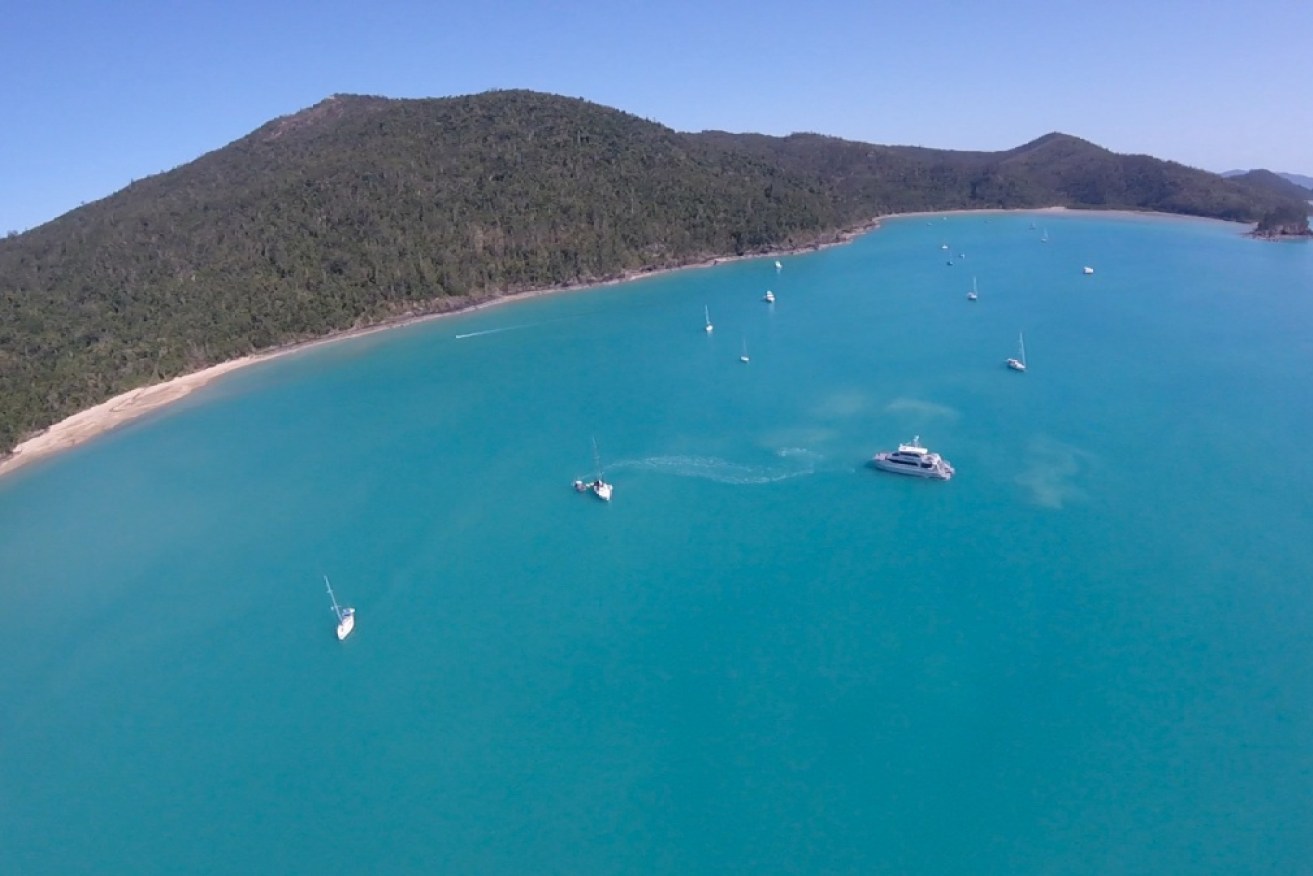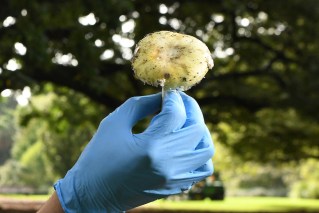A bad risk for sharks: Wary locals knew better than to take a dip in Cid Harbour


The area has long been known as unsuitable for swimming, diving or snorkelling. Photo: AAP
Locals have always known that Cid Harbour – a heavily forested bay, rather than a township – was a bad risk for swimming.
It’s listed as such in the 100 Magic Miles, the Whitsundays sailing almanac. That’s according to Tom Pugh who works in operations with Whitsunday Escape, a bareboat charter company.
However, Mr Pugh said it was “after recent events” that the company had put the following notice on its website: “There is no swimming at Cid Harbour at any time.”
Those “recent events” are three shark attacks in close succession that killed a Melbourne medical researcher, took the leg of a 12-year-old Victorian girl and left a Tasmanian woman lucky to be alive. The attacks on the woman and the girl occurred within hours of each other in September. The doctor died early this week.
No catching these tigers by the tail
The Queensland government is now spending $250,000 on researching what kind of sharks visit the harbour, and why they have been attacking humans.
There is now an indefinite ban on swimming in the area – which means state law has finally caught with local lore.
The fact is the government knows that tiger sharks frequent the harbour because three large tiger sharks were caught and shot in response to the first attacks.
Tiger sharks are responsible for the second-highest number of fatal attacks on humans after the great white.
The research will also look at patterns of movement of sharks in the area, but according to marine biologist Dr Blake Chapman – author of Shark Attacks: Myths Misunderstandings and Human Fear published by the CSIRO – the behaviour of tiger sharks has long confounded the experts.
“Tiger sharks are a anomaly,” Dr Chapman told The New Daily.
“Every time we think we know what they’re doing, they find a way to prove us wrong. When we think they are moving in a particular pattern, we find the adult females or the male juveniles are behaving differently.”

An influx of bait fish into the harbour may have attracted more sharks. Photo: Getty
The answers come too late
By the time experts figure out why the attacks happened at Cid Harbour, the circumstances that favoured them will have probably changed.
“What’s happened at Cid Harbour is quite a strange occurrence, because we don’t often see a number of bites happening in a short amount of time,” said Dr Chapman. “This suggests that something has changed.”
Cid Harbour is a popular first-night anchorage in the Whitsundays for bareboat charters. If human behaviour has remained more or less constant, Dr Chapman suggested there could have been a large movement of bait fish into the harbour, bringing the sharks with them.
“Unfortunately we tend to learn about what’s happened in retrospect,” she said. “But if we can figure out what’s changed, we can act for the future.”
Dr Chapman was concerned that almost none of the media reportage included the perspective of locals. As she told Australian Geographic:
“There was an open letter to the Queensland Premier from a local arguing against lethal mitigation, like drum lines, when educational signs and communication from tourism operators would be far more appropriate. The locals already knew not to swim there.”
In the open letter, local woman Kellie Leonard asked Queensland Premier Annastacia Palaszczuk to visit Cid Harbour to get a better understanding of the area.
“Commercial live-aboard vessels and day tour operators never visit Cid Harbour because it is well known as being not a good swimming area and is no good for snorkelling or diving,” Ms Leonard reportedly wrote.
Barbara Wueringer is a zoologist and founder of Sharks and Rays Australia. She told The New Daily that the attacks, if not the rest of fish movements, may have resulted from chum or bait being thrown into the water.
Tourists luring sharks to their boats
Dr Wueringer told Australian Geographic that she had found videos on social media where guests on privately chartered yachts were hanging large chunks of bait overboard and successfully attracting tiger sharks to their boats.
“Their holiday fun actually conditions the sharks to associate yachts with food,” she said.
She also said that a fisherman in the area had reported that there were unusually high numbers of juvenile sharks near the Whitsundays coastline at the time of the attacks.
The man reportedly told her that larger sharks had started taking small sharks out of his nets before he could pull them in – which suggested the presence of sharks off the island was well known.
There are also bigger picture elements at play. Research has found that tiger sharks favour eating older green turtles – which happen to be in sharp decline on the Great Barrier Reef because of climate change.
Could this be playing a part in the current crisis – sharks turning to humans as an alternative food source? Dr Wueringer thought not yet – those are problems for the future.








